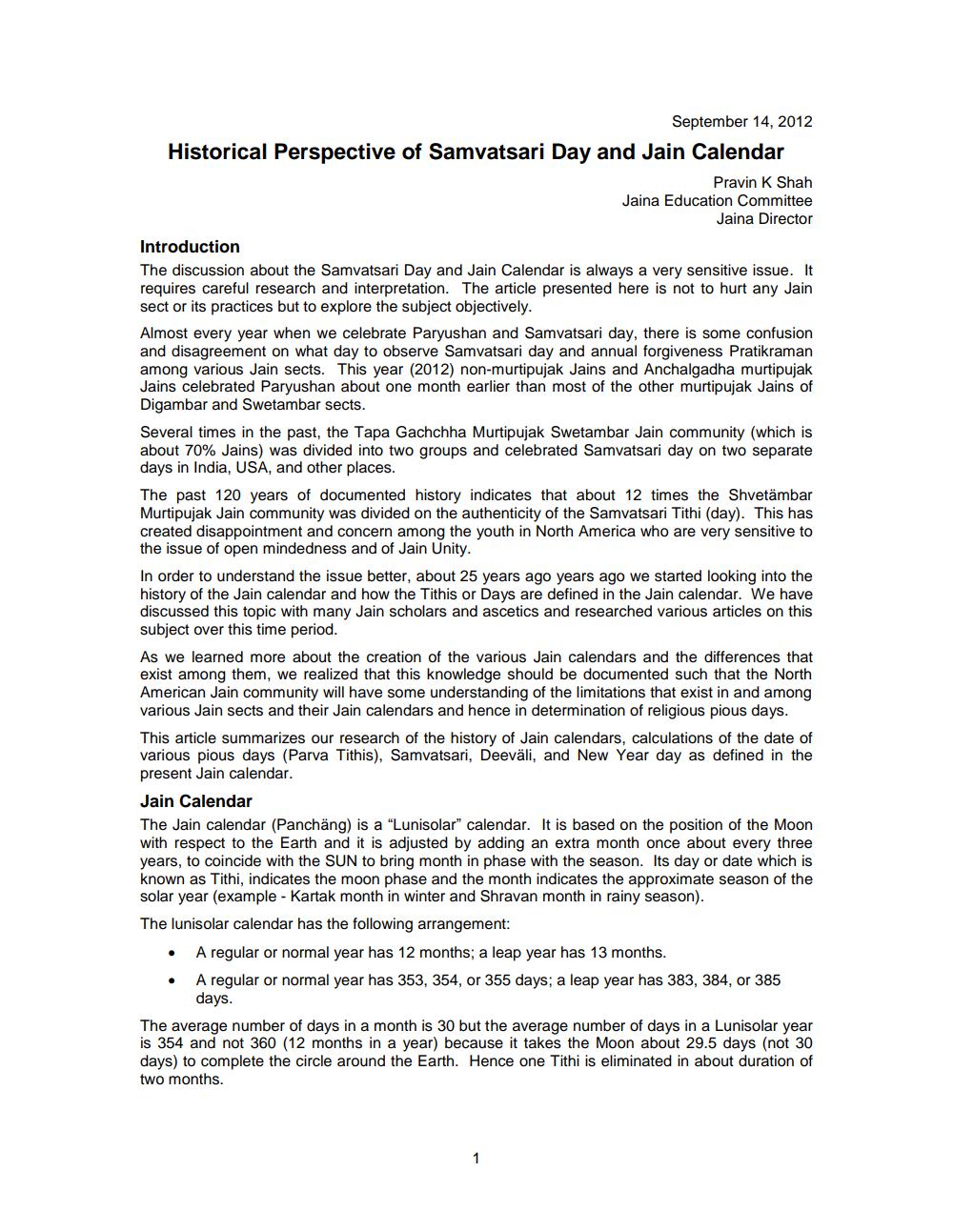Book Title: Historical Perspective of Samvatsari Day and Jain Calendar Author(s): Pravin K Shah Publisher: JAINA Education Committee View full book textPage 1
________________ September 14, 2012 Historical Perspective of Samvatsari Day and Jain Calendar Pravin K Shah Jaina Education Committee Jaina Director Introduction The discussion about the Samvatsari Day and Jain Calendar is always a very sensitive issue. It requires careful research and interpretation. The article presented here is not to hurt any Jain sect or its practices but to explore the subject objectively. Almost every year when we celebrate Paryushan and Samvatsari day, there is some confusion and disagreement on what day to observe Samvatsari day and annual forgiveness Pratikraman among various Jain sects. This year (2012) non-murtipujak Jains and Anchalgadha murtipujak Jains celebrated Paryushan about one month earlier than most of the other murtipujak Jains of Digambar and Swetambar sects. Several times in the past, the Tapa Gachchha Murtipujak Swetambar Jain community (which is about 70% Jains) was divided into two groups and celebrated Samvatsari day on two separate days in India, USA, and other places. The past 120 years of documented history indicates that about 12 times the Shvetämbar Murtipujak Jain community was divided on the authenticity of the Samvatsari Tithi (day). This has created disappointment and concern among the youth in North America who are very sensitive to the issue of open mindedness and of Jain Unity. In order to understand the issue better, about 25 years ago years ago we started looking into the history of the Jain calendar and how the Tithis or Days are defined in the Jain calendar. We have discussed this topic with many Jain scholars and ascetics and researched various articles on this subject over this time period. As we learned more about the creation of the various Jain calendars and the differences that exist among them, we realized that this knowledge should be documented such that the North American Jain community will have some understanding of the limitations that exist in and among various Jain sects and their Jain calendars and hence in determination of religious pious days. This article summarizes our research of the history of Jain calendars, calculations of the date of various pious days (Parva Tithis), Samvatsari, Deeväli, and New Year day as defined in the present Jain calendar. Jain Calendar The Jain calendar (Panchäng) is a "Lunisolar" calendar. It is based on the position of the Moon with respect to the Earth and it is adjusted by adding an extra month once about every three years, to coincide with the SUN to bring month in phase with the season. Its day or date which is known as Tithi, indicates the moon phase and the month indicates the approximate season of the solar year (example - Kartak month in winter and Shravan month in rainy season). The lunisolar calendar has the following arrangement: ⚫ A regular or normal year has 12 months; a leap year has 13 months. A regular or normal year has 353, 354, or 355 days; a leap year has 383, 384, or 385 days. The average number of days in a month is 30 but the average number of days in a Lunisolar year is 354 and not 360 (12 months in a year) because it takes the Moon about 29.5 days (not 30 days) to complete the circle around the Earth. Hence one Tithi is eliminated in about duration of two months. 1Page Navigation
1 2 3 4 5 6 7 8 9 10 11
